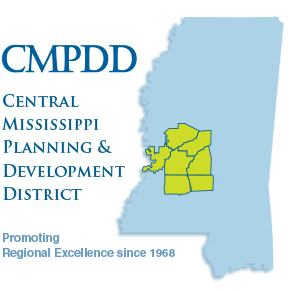In order to be eligible for federal funding, federal regulations require a roadway to be functionally classified. Functional classification is the process by which streets and highways are grouped into classes according to the character of service they are intended to provide. Roads with higher classifications serve the mobility needs of a greater number of people, and typically carry more traffic. Roads with lower classifications tend to provide access more to individual properties than serve the mobility needs of a greater number of people.
In the Jackson Urbanized Area (JUA) five classifications are used to categorize roadways based on their identified purpose and function for meeting the demands of motorists on the overall roadway network. They include interstates, principal arterials, minor arterials, collectors and local streets. Below is a listing of each classification with a brief description explaining the function each classification serves.
Interstates
Interstates are the highest classification of Arterials and are designed and constructed with mobility and long-distance travel in mind. These facilities are divided highways with full access control and grade separations at all intersections. The controlled access character of interstates results in high-lane capacities, which are three times greater than the individual lane capacities of urban arterial streets.
Examples:
Interstates 20, 55 and 220.
Principal Arterials
These roadways serve major activity centers, are the highest traffic volume corridors (with the exception of Interstates), have the longest trip demands, carry a high proportion of total urban travel on a minimum amount of mileage and interconnect and provide continuity for major rural corridors to accommodate trips entering and leaving urban areas and movements through urban areas.
Examples:
County Line Road, Ridgewood Road, Gluckstadt Road, Hwy. 51, Old Fannin Road and Hwy. 25.
Minor Arterials
Minor Arterials provide service for trips of moderate length at a somewhat lower level of travel mobility, distribute traffic to smaller geographic areas, provide more land access than Principal Arterials without penetrating identifiable neighborhoods and offer connectivity to the higher arterial system.
Examples:
Gallatin Street, Old Vicksburg Road, Nissan Parkway, Highland Colony Parkway, Old Hwy. 49 and Old Brandon Road.
Collector Streets
These facilities provide both land service and traffic movement functions. Collectors serve as intermediate feeders between arterials and local streets and primarily accommodate short distance trips. Since collector streets are not intended to accommodate long through trips, they are generally not continuous for any great length.
Examples:
Gary Road, Eastover Drive, St. Augustine Drive, King Ranch Road, Star Road and Burnham Road.
Local Streets
Consists of all roads not defined as arterials or collectors. Local streets typically support direct access to homes and are generally designed for slow speeds.
Functional Classification Viewer



You must be logged in to post a comment.